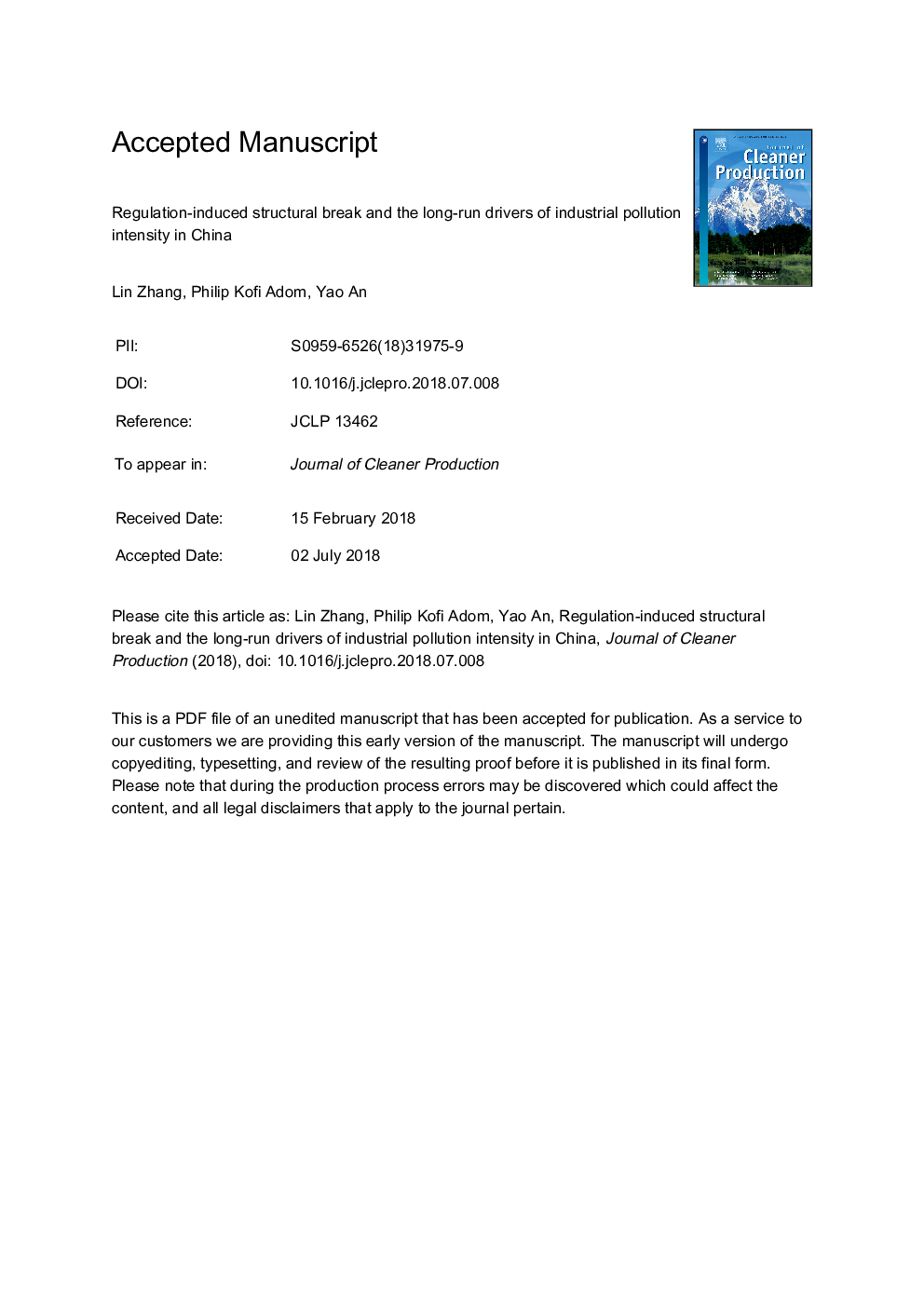| Article ID | Journal | Published Year | Pages | File Type |
|---|---|---|---|---|
| 8093426 | Journal of Cleaner Production | 2018 | 44 Pages |
Abstract
This study examines the effect of the regulation-induced structural break on the nexus between industrial pollution intensity (IPI) and energy use structure in China. Using six industrial pollutants intensity, IPI indicator is derived from Principal Component Analysis. The study applies three types of time-series based approaches, including Fully-Modified Ordinary Least Squares, Canonical Cointegrating Regression, and Dynamic Ordinary Least Squares, to deal with the problems of serial correlation and endogeneity. The results show that while a higher share of coal energy use increases IPI, stricter environmental regulation shifts the long-run IPI curve downwards. When we interact both variables, the results reveal that stricter environmental regulation induces a significant structural break in industrial use of coal energy, in a manner that reduces the associated emissions. Furthermore, investment in environmental treatment, trade liberalization and foreign direct investment reduce IPI in the long-run, but real gross domestic product increases IPI, which suggests the absence of scale economies in the industrial sector. To reduce IPI, stricter environmental regulations are necessary. The government can leverage on the positive environmental benefits of foreign investment, international trade, and direct investment in environmental treatment.
Keywords
Related Topics
Physical Sciences and Engineering
Energy
Renewable Energy, Sustainability and the Environment
Authors
Lin Zhang, Philip Kofi Adom, Yao An,
